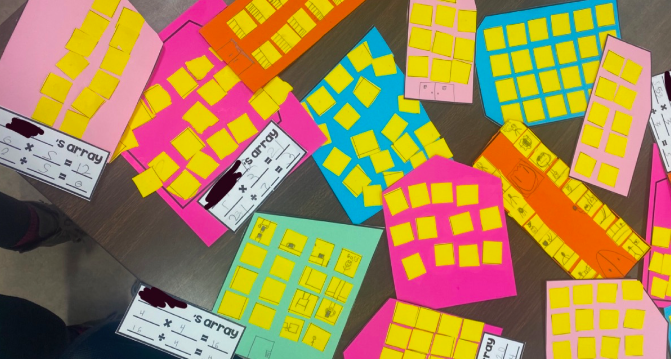Educators implement effective planning, instruction, assessment and reporting practices to create respectful, inclusive environments for student learning and development.
Standard 5 is a very important part of being a successful educator. In order for me to be as successful as I was at implementing this guideline in my teaching practice, I had to rely on the relationships that I made with the students to know how I can best fit their needs (refer to standard one for emphasis on relationship building). In the classroom that I was in for my experimental practicum, I had a class of very diverse learners. Due to various learners, effective planning and instruction was essential to my teaching time in the classroom.
For every lesson, there were many things that I did in order to reach the majority, if not all of my students in ways they could understand and grow from. For example, I had a few students who were excelling at either their grade level, or above it. For these students, it wasn’t fair for me to limit their progress, but I also didn’t want to overwhelm or discourage the learners who needed a more ‘broken down’ lesson and activity. To accommodate both of these types of learners, there were usually very thought-out lessons, with various examples and several options for activities or worksheets. I used this approach in attempt to provide opportunities to learn for all types of learners. For example, for a writing assignment, I would plan to have my criteria for everyone, as well as a ‘challenge’ for my exceptional learners. Meanwhile, I would know that some of the students might get three sentences down but worked super hard to get there.
Even though this planning was more strenuous than if I was to have prepared one set of expectations or criteria, I think it really paid off during my instruction.
For the instruction part of my lessons, both universal design for learning (UDL) and differentiation are important to me. It was a goal of mine to make sure that all students had access to the lesson and could follow along regardless of the stage they were at in their learning. To provide students with access, I used a combination of visuals, written examples or instructions and hands-on learning to aid in my instructional time. For example, during math lessons, I often used different manipulatives (such as blocks or tiles) and the students individual white boards so all students could participate and develop their abilities. The way I tried to approach my lessons meant that even though the students were working on using the same skillset, they had activities varying in difficulty to aid in the students learning or overall success.
In planning future lessons, formative and ongoing assessment were my best tools. During my lessons, no matter the student, I made sure that I gave them each one piece of feedback to propel their learning forward. Also, for every lesson I did, I always made sure there was some type of way that I could assess my students learning. Sometimes this was a worksheet they completed, sometimes it was an exit slip I created (a whiteboard question to show me, a verbal recollection), and other times it was simply notes I had taken during the lesson. These assessments were crucial to me because even though there were no summative assessments during this three-week practicum, the formative assessments I did helped me review, analyze and adjust my future lessons.
Throughout this practicum, I learned just how important planning, instruction and assessment are to providing inclusive learning to all my students. These steps helped me give my students instruction that they both needed and understood. I also know that the only way to keep making improvements, I need to keep looking for ways to better include all my students. One thing I need to learn more about is how to aid those students who need more attention or help without limiting the learning of the rest of the class. I am excited to do this work and welcome the challenges I might have to face to make my classroom better for all my students.

